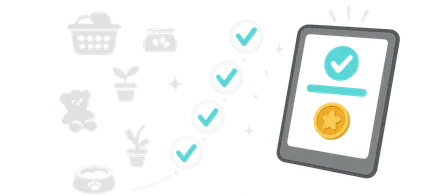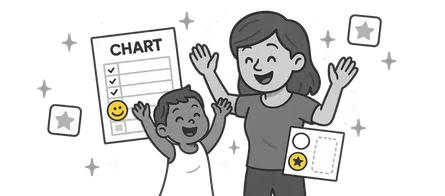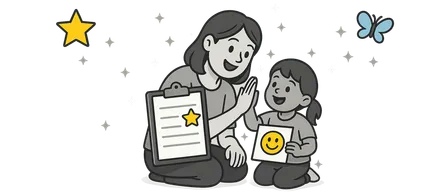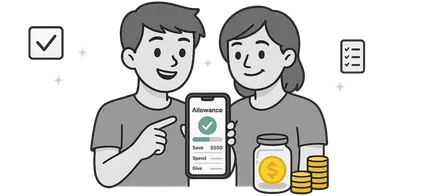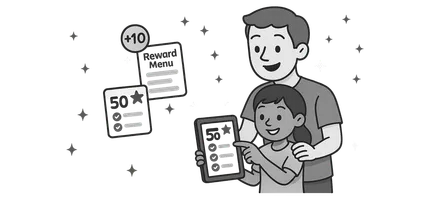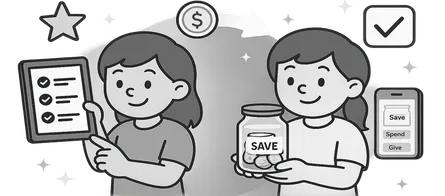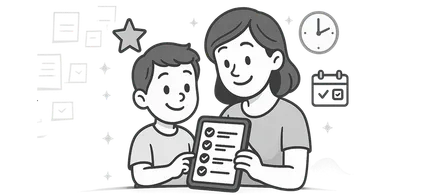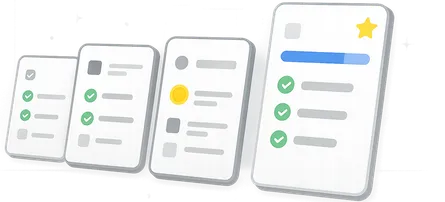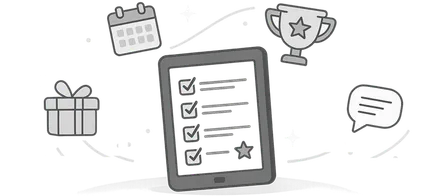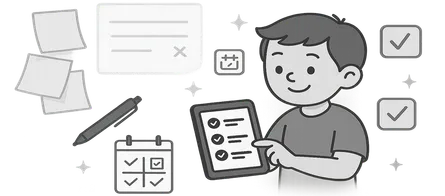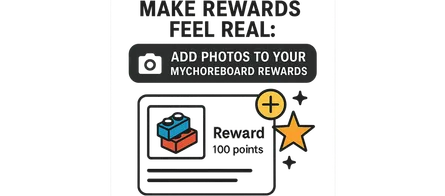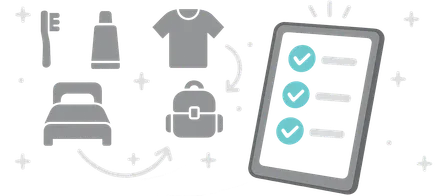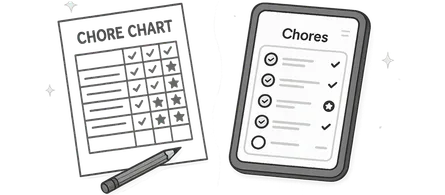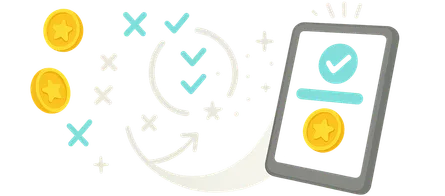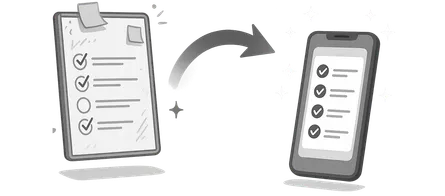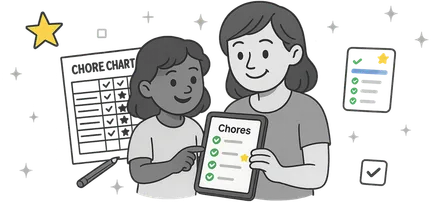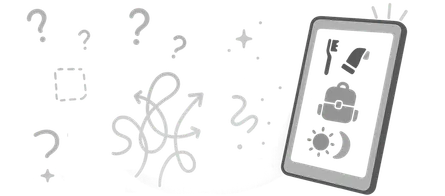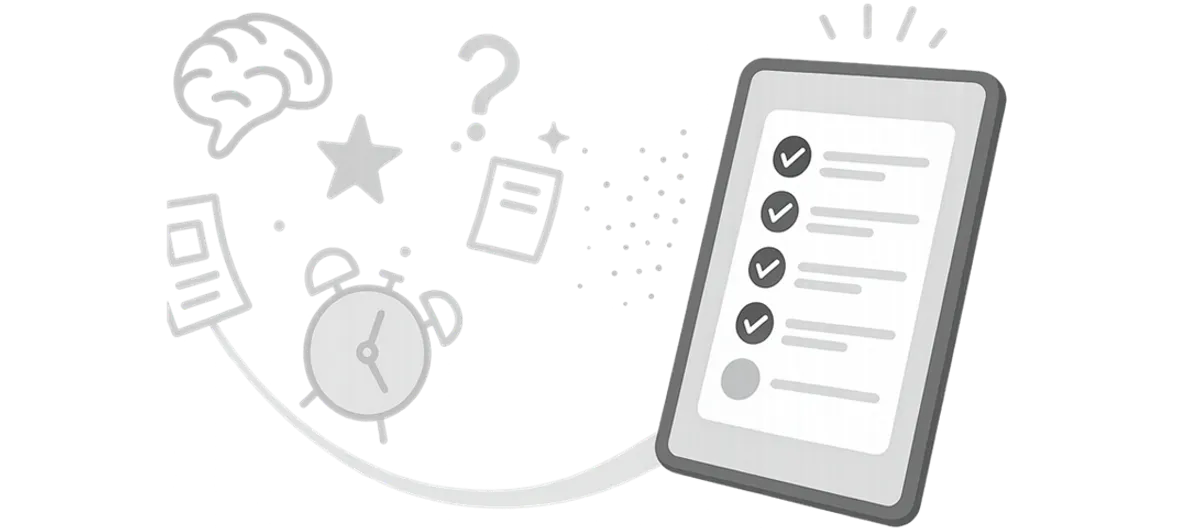
How Chore Apps Can Help ADHD Kids Build Routines & Confidence
- Jacob Volk
- Parenting , ADHD
- 16 Sep, 2025
When ADHD Turns Routine Into a Daily Battle
Parenting a child with ADHD can feel like running a marathon that resets every morning. You start hopeful, but by lunchtime the checklist is missing, the reminders are ignored, and the frustration sets in again.
Kids with ADHD often struggle with structure — not because they don’t care, but because their brains process focus, time, and motivation differently. A simple morning list can turn into overwhelm, and a paper chart can quickly become invisible clutter.
That’s where chore apps come in. These tools give kids visual clarity, consistent feedback, and a sense of control — while helping parents step back from constant reminders. Instead of chasing chaos, you start building rhythm.
This article is part of our ADHD & Routines series. To learn everything there is to know about chore app setup, see: The Ultimate Guide to Free Chore Apps for definitions, setup steps, and FAQs.
Why ADHD Makes Routines So Hard
ADHD isn’t about discipline; it’s about executive function — the brain’s system for planning, prioritizing, and following through. What feels simple for neurotypical kids can feel like juggling ten tasks at once for a child with ADHD.
Executive function also plays a major role in motivation, emotion regulation, and self-esteem. When a task feels boring, unclear, or too big, ADHD brains struggle to release the dopamine needed to get started. That’s why kids might stall, resist, or melt down at transitions — it’s not opposition; it’s overload. And every time a parent steps in to rescue or remind, it can unintentionally reinforce that sense of dependence.
The result? Kids lose confidence, parents lose patience, and the routine breaks down. But when we understand that ADHD is about brain wiring — not willpower — we can support kids with systems that meet their neurological needs instead of fighting against them.
Here’s what many ADHD families experience daily:
- Forgetting steps in even familiar routines
- Trouble starting tasks, especially boring ones
- Losing motivation mid-way without visible progress
- Emotional frustration when transitions feel sudden or forced
A 2022 study of 207 children (ages 5–13) found that regular participation in chores improved working memory and impulse control — two skills directly tied to executive function (ResearchGate, 2022).
Chores aren’t just about cleaning — they’re daily exercises in persistence and sequencing. Each successful checkmark is a micro-win that strengthens focus, confidence, and self-regulation.
Why a Chore App Works Better Than a Whiteboard
Most ADHD parents have tried it all: whiteboards, sticky notes, checklists, magnet boards. And they all work… for about two weeks. Then the novelty fades, the chart goes untouched, and parents end up repeating the same instructions again.
Chore apps solve this problem by automating structure. They deliver the same visual reminders, but without the parent needing to be the system. Kids check off tasks, see progress instantly, and learn that completion triggers reward.
When used correctly, a chore app becomes more than a to-do list — it’s an accountability partner that doesn’t get tired.
They offer:
- Visual schedules kids can follow without supervision
- Instant feedback that rewards completion
- Automatic resets that remove the mental load from parents
- Syncing across devices for multi-home or co-parenting families
ADHD kids don’t need more reminders — they need more reliable systems.
Related reading: Printable vs Digital Chore Charts — What Works Best?
Visuals Are the Secret Weapon
For kids with ADHD, words alone aren’t enough — they need to see what success looks like. Visual information travels faster and sticks longer than verbal instructions. That’s why chore apps with icons, color coding, and progress visuals have such a big impact.
The science backs it up. Visual activity schedules have been shown to reduce problem behaviors and improve transitions for kids with ADHD (PMC, 2022). Visuals do the heavy lifting that the working memory can’t.
Here’s how chore apps bring that science into the real world:
- Color-coded lists reduce overwhelm and increase clarity.
- Icons help kids recognize tasks without needing to read instructions.
- Step-by-step breakdowns make big jobs feel achievable.
- Visual streaks and badges trigger dopamine — the brain’s motivation chemical.
Visuals turn the abstract into something concrete. Kids can see progress, not just hear reminders.
Explore more: Why Visual Cues Help ADHD Kids Stick to Routines
The Motivation Problem (and How Chore Apps Solve It)
Motivation is the Achilles’ heel of ADHD. Kids know what to do — they just can’t feel the drive to do it. That’s because ADHD brains don’t release dopamine the same way typical brains do; the reward has to feel immediate and meaningful.
Chore apps bridge that gap beautifully. Instead of waiting until the end of the week for an allowance or a gold star, kids get instant feedback every time they complete a task. That creates small doses of satisfaction that fuel momentum.
In short, it’s about earning as they go, not waiting for payoff later.
Chore apps close that gap by providing:
- Instant wins through points or animations that fire immediately after task completion
- Short-term goals like streaks and badges to create momentum
- Clear connections between effort and tangible rewards
Motivation thrives on momentum. Every completed task sends a small “success signal” — and that success compounds.
Read next: Reward Systems That Motivate ADHD Kids
Shifting the Parent Role: From Reminder to Coach
One of the most powerful benefits of a chore app isn’t just what it does for kids — it’s what it does for parents. It changes the emotional climate of the household.
When the app becomes the “bad guy,” parents can step out of the nagging loop. You’re no longer the reminder system; you’re the encourager, the observer, the coach. You get to praise effort instead of enforcing compliance.
That small shift rebuilds trust and reduces emotional friction, especially for ADHD families where tension can rise fast. For many parents, the first week using an app is the first time they’ve gone an entire morning without arguing about chores — and that emotional relief is powerful.
In co-parenting or split-home families, this neutrality matters even more. When both homes use the same app, structure stays consistent regardless of whose week it is. Kids no longer face a new routine at every handoff, which stabilizes their attention, confidence, and emotional rhythm. Predictability becomes the bridge between homes.
Chore apps offload that emotional labor and make accountability feel fair:
- Kids respond to the system, not the parent.
- Parents shift from reminders to reinforcers — offering support, not correction.
- Parents can review history and progress together instead of debating what got done.
MyChoreBoard includes parent approvals, history tracking, and cross-device sync — all designed to support structure without adding stress.
Why ADHD Families Outgrow Paper Systems
At first glance, paper charts seem easier. But for ADHD families, maintenance kills momentum. It takes constant rewriting, reprinting, or verbal reminding — and every extra step becomes another chance for the system to break.
What starts as a cute system quickly turns into a chore for the parent. And the more effort it takes to maintain, the faster everyone abandons it.
Digital systems remove that friction entirely. They keep lists fresh, reset automatically, and reward consistency without any extra parent labor.
For families managing ADHD, this automation matters. It ensures that structure doesn’t depend on willpower alone.
Paper charts often collapse under the weight of maintenance. For families managing ADHD, the cycle looks like this:
- Week 1: everyone’s excited
- Week 2: the novelty fades
- Week 3: parents are the only ones updating it
Research shows that children with ADHD are less likely to participate in household chores without consistent structure and positive feedback (SAGE Journals, 2020).
Chore apps prevent that slide by building in feedback loops that sustain interest and independence.
Also see: ADHD and Household Responsibilities: What Parents Should Know
Real-World Tips for Parents
You don’t have to overhaul your whole system overnight. The most successful families start small, build confidence, and let consistency take over.
Here’s how to make a chore app work in a real ADHD household:
1. Start Tiny
Begin with two chores your child can finish daily. Early success builds trust in the system.
2. Break Big Tasks Into Steps
ADHD kids thrive when tasks are concrete and specific: “Put dirty clothes in the basket” beats “Clean your room.”
3. Reward Immediately
Connect rewards to short-term progress — points, stars, or digital badges that trigger positive feedback right away.
4. Give Ownership
Let kids choose their icons, sounds, or reward types. When kids personalize their experience, they’re more likely to stick with it.
5. Keep It Visible
Out of sight, out of mind. Place the family tablet where it’s seen every day — the kitchen counter is often best.
6. Reset Together Weekly
Use a short Sunday family meeting to review wins, adjust chores, and celebrate effort over perfection.
A 2021 LSU study found that tech-based interventions improved morning routine completion rates and were rated “highly acceptable” by ADHD parents (LSU Dissertation, 2021).
Structure Builds Freedom
Routines don’t have to feel like restriction — for ADHD families, they’re the foundation of freedom. The right chore app doesn’t just make mornings smoother; it builds self-confidence, independence, and calm.
When kids learn to follow their own lists, they begin to trust themselves. When parents can guide without micromanaging, the home becomes a calmer, more collaborative space.
Technology can’t replace connection, but it can remove friction — giving families room to focus on what really matters: growth, teamwork, and shared wins.
Small steps, consistent feedback, visible progress — that’s how ADHD routines finally stick.
Frequently Asked Questions
Yes — as long as it’s visual, structured, and easy to use. ADHD kids thrive with systems that give instant feedback. Apps make accountability automatic, which helps habits stick.
Not in the traditional sense. Chore apps use short, focused interactions — often under two minutes. The screen becomes a structure tool, not a distraction.
Ages 5–7 can begin with icons and pictures; ages 8–12 can track points and rewards independently. The key is tailoring visuals and rewards to your child’s development.
Absolutely. MyChoreBoard syncs in real time, so both parents can track progress and update chores from anywhere. Kids see one consistent list no matter where they are.
Rotate rewards, add seasonal chores, or let them personalize icons and sounds. ADHD brains love novelty — small refreshes reignite motivation.
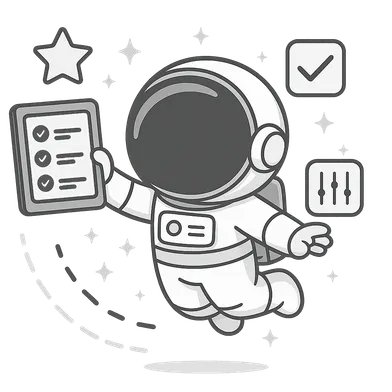
Ready to try MyChoreBoard with your kids?
Install on any phone, tablet or computer. Free with no sign-in hoops.
Get Started Now